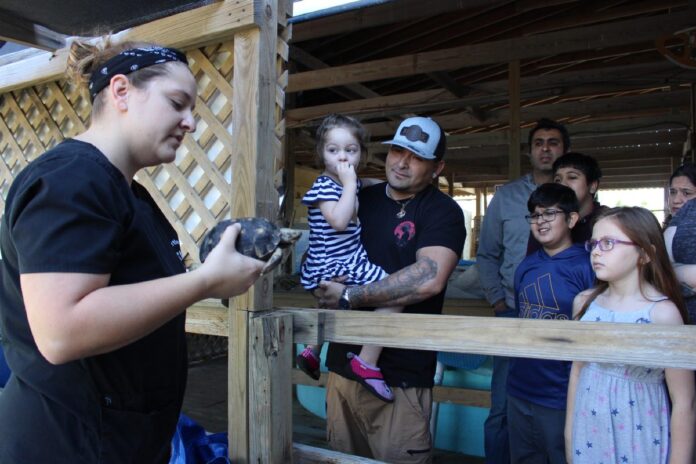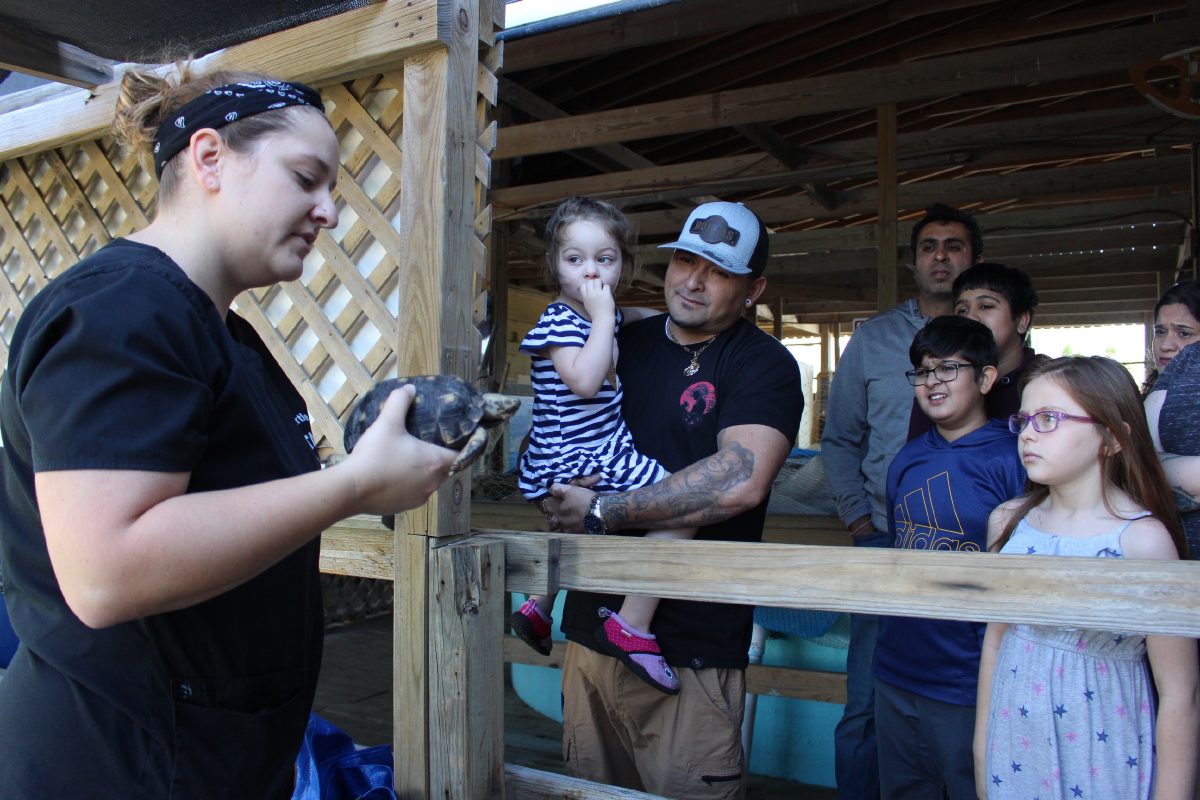SOUTH PADRE ISLAND — Reaching a shell length of about nine inches, these small tortoises can often be seen wandering throughout the Valley for shelter or their next meal.
As they venture through the wilderness, they become exposed to many threats such as exotic pathogens, predation and even roadside mortalities.
Unfortunately, some tortoises succumb to these threats, but many are also able to recover thanks to the help of local environmental organizations.
Sea Turtle, Inc. is currently caring for its first group of Texas tortoises.
Tex, Tort-ellini and Bulldozer suffered injuries after being struck by cars and have been undergoing treatment at Sea Turtle, Inc. for about the past two to three months.
“I’m really excited about branching out a little bit,” said Nina Nahvi, Sea Turtle, Inc.’s licensed veterinary technician. “Don’t get me wrong, I love sea turtles, but it’s really nice to be able to rehabilitate different kinds of animals.”
Treatment
Every day the trio is given their favorite food, prickly pears, which often leave temporary purple stains around the turtles’ mouths after being eaten.
On a weekly basis, the tortoises receive cold laser therapy, which helps promote wound healing.
Additionally, the trio is individually weighed every week.
“Sometimes they burrow and it’s hard to tell if they’re eating or not,” Nahvi said. “So we want to track it to make sure that they’re not gaining or losing a lot of weight.”
According to Nahvi the turtles will most likely be released this spring around March or April.
“In this point of time, it’s kind of like the final stages of the healing process,” she explained. “So that includes hardening of the shell or calcification of the areas that are soft.”
Prior to their care at Sea Turtle, Inc. the three Texas tortoises were undergoing rehab at the Gladys Porter Zoo in Brownsville.
“Dr. Thomas deMaar is the head veterinarian at the Gladys Porter Zoo and he’s also the veterinarian at Sea Turtle, Inc.,” Nahvi said. “They have several Texas tortoises undergoing rehab there and we have this nice outside enclosure that gets a lot of sunlight so he asked if we could take them in just so they can finish out the end of their rehab.”
Public education
Sea Turtle, Inc. introduced the trio to the public via Facebook on Dec. 28.
“People loved it,” Nahvi said with a laugh and a smile. “Turtles are really charismatic and I think there are certain animals that people have some sort of draw toward. Sea Turtles are one of them for sure and I think Texas tortoises might be as well based on the response we received from the general public.”
Nahvi believes having the tortoises at Sea Turtle, Inc. is a great educational tool for visitors.
“With the Texas tortoises, people can see that they’re able to withdraw their limbs and heads into their shells as a defense mechanism and sea turtles can’t, so just looking at the different anatomical differences as well is helpful,” she explained. “It’s also nice because you can get a little bit closer than the sea turtles in the tanks that swim to the other side and might not be as visible. So I think it’s really nice to engage the public with the Texas tortoises.”
DID YOU KNOW?
• Of the four species of tortoises found in North America, the Texas tortoise is the only one found in Texas.
• They can be found throughout southern Texas as well as northern Mexico.
• Texas tortoises can live as long as 60 years, but do not reach breeding age until 15 years.
• There are many threats to the survival of the Texas tortoise which includes — habitat loss, illegal collection, roadside mortalities, predation and exotic pathogens.
• The Texas tortoise is listed as a threatened species in the state of Texas and therefore is protected by state law. It is illegal to collect, possess or harm them. Penalties include paying $273.50 per tortoise.
Source: TPWD
WHAT SHOULD YOU DO IF YOU FIND A TEXAS TORTOISE?
IN THE WILD — Leave it alone.
IN THE CITY — Contact the Texas Parks and Wildlife Department at (800) 792-1112 or a local rehab adoption center.
ON THE ROAD — Do not risk injuring yourself or the tortoise. It is OK to move a tortoise across the road to safety, but do not move it long distances.
Source: TPWD







